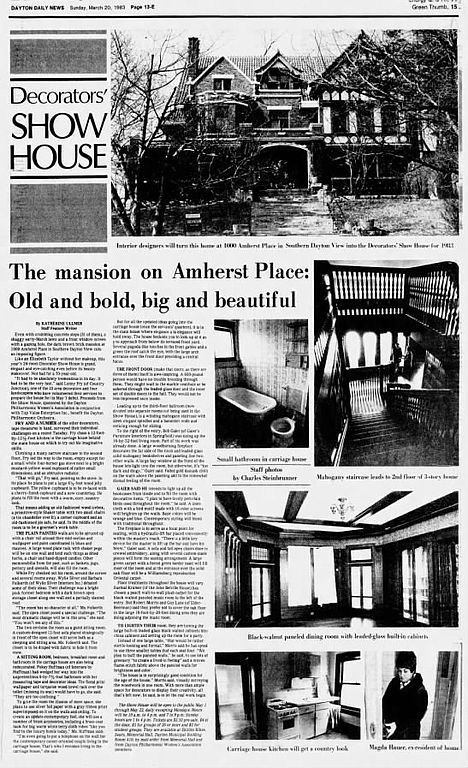Tudor Architecture in the United States
Drawing Room and Library of Glenridge Hall in Sandy Springs, Georgia (recently demolished by owner)
In the realm of architecture, few styles evoke the same sense of timeless charm and historic elegance as the Tudor architectural style. Originating from the late medieval and early Renaissance periods in England, the Tudor style has left an enduring mark on both European and American landscapes. In this blog post, we embark on a journey through the unique features, designs, and history of Tudor architecture, uncovering its captivating legacy in the United States.
Amherst Terrace in Dayton View Historic District
Glenridge Hall Drawing Room
Features of Tudor Architecture:
Half-Timbered Facades: One of the most distinctive features of Tudor architecture is the use of exposed wooden framework, known as half-timbering. These timbered elements often form intricate patterns, creating a striking contrast against the stucco or brick infill.
Steeply Pitched Roofs: Tudor-style homes are characterized by their steeply pitched roofs, often featuring multiple gables. The use of steep angles not only adds a sense of drama to the design but also allows for the inclusion of charming dormer windows.
Decorative Chimneys: Elaborate and decorative chimneys are a hallmark of Tudor architecture. These chimneys are often tall and slender, adorned with ornate detailing such as brickwork or terracotta.
Leaded Glass Windows: Tudor homes boast distinctive windows with leaded glass panes set in metal casements. These windows contribute to the overall picturesque quality of the style and often showcase diamond or rectangular patterns.
Quaint Entryways: Entryways in Tudor-style homes are typically adorned with arched doorways and sometimes feature a porch or an overhanging second story. This design element adds a welcoming touch to the façade.
Examples of Tudor Architecture in the United States:
Grey Towers Castle - Glenside, Pennsylvania: Completed in 1893, Grey Towers Castle is a prime example of Tudor Revival architecture. This majestic structure, part of Arcadia University, features turrets, leaded glass windows, and an overall fairy-tale charm.
The Gamble House - Pasadena, California: Designed by the Greene and Greene architectural firm, the Gamble House is an exquisite Tudor-style masterpiece. Known for its meticulous craftsmanship, exposed timber beams, and beautiful gardens, it stands as a testament to the enduring appeal of Tudor architecture.
Tudor City - New York City, New York: A unique example of Tudor-style urban planning, Tudor City in Manhattan comprises a collection of apartment buildings designed in the Tudor Revival style. The complex, completed in the 1920s, creates a picturesque enclave amidst the bustling city.
Tudor architecture, with its enchanting blend of medieval aesthetics and Renaissance refinement, continues to capture the hearts of architecture enthusiasts and homeowners alike. As we explore the unique features and iconic examples of Tudor-style buildings in the United States, we witness the enduring legacy of a design philosophy that transcends centuries. Whether nestled in a historic neighborhood or standing as a modern homage to tradition, Tudor-style homes remain a testament to the enduring allure of classic architectural beauty.





